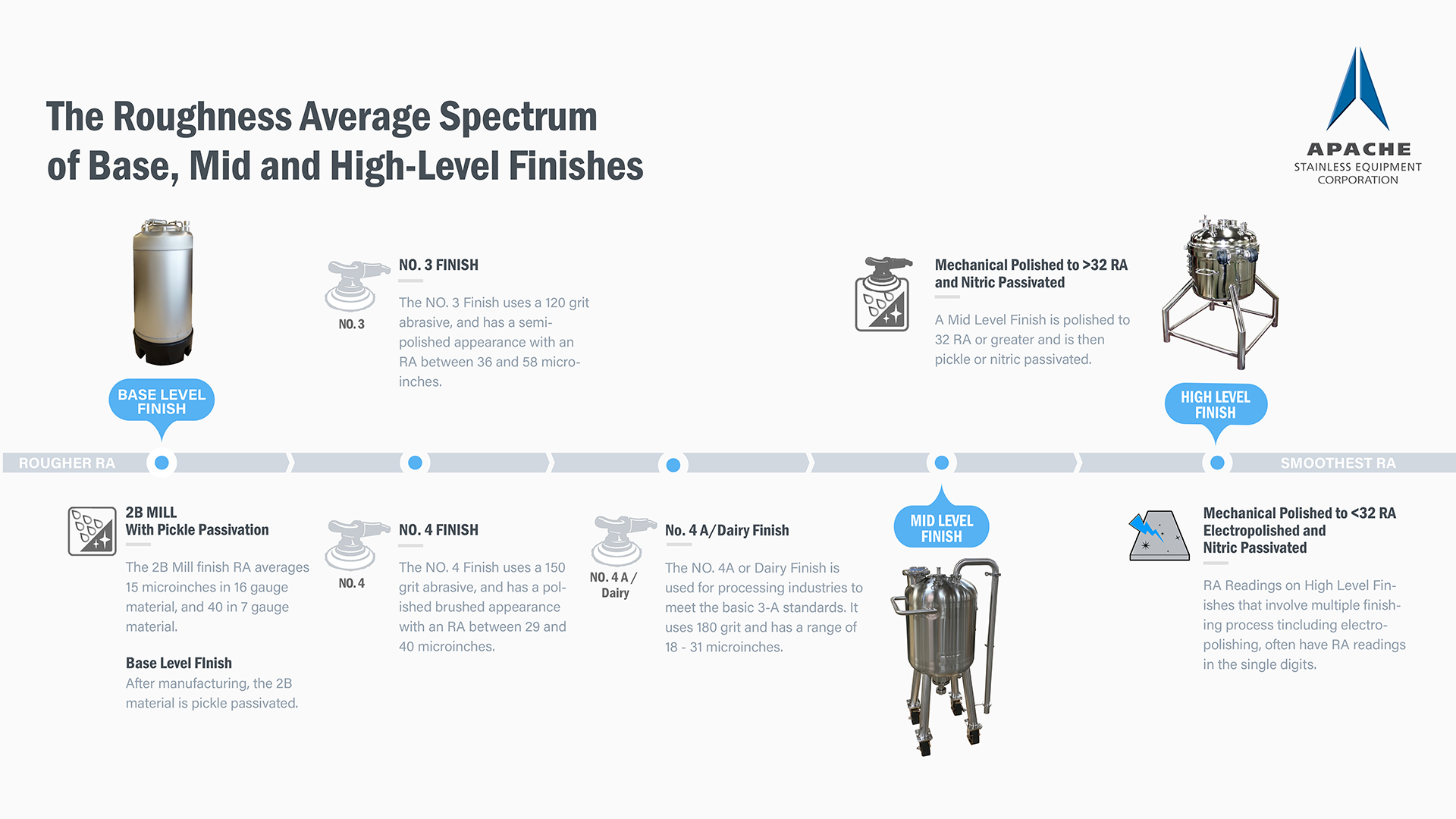
Categorizing levels of sanitary design is helpful to professionals new to compliance-regulated industries requiring custom vessels because it bridges communications regarding standards and design requirements.
In hygienic applications, stainless equipment requires a sanitary finish which generally refers to a smooth, scratch-free, non-corrosive finish. The fineness of the finish, which determines its performance, is measured in RA (roughness average). The infographic illustrates the RA of different types of mill, mechanical, and chemical finishes. The smaller the RA reading in microinches (height in millionths of an inch), the smoother the finish.
When collaborating to qualify a project, we define a Base Level Finish as a 2B/Mill, 304 or 316 stainless materials that is pickle passivated. The welds are continuous and crack and crevice-free. This type of finish is paired with a Base Level Sanitary Design and is cleaned manually. Apache’s standard portable vessel line are an example of the base sanitary design and finish level.
A Mid-Level Finish is also composed of 304 or 316 stainless material and involves a secondary process of mechanical polishing greater than 32RA, with final finishing to include pickle or nitric passivation. The welds are continuous, crack and crevice-free, and are also ground flush and polished smooth to a specific RA. Sanitary fittings, mechanical polishing, additional passivation processes and a cleanable design with removable components are categorized as Mid-Level Sanitary Design features.
Providing the smoothest RA readings is an electropolished finish after a series of processes, including mechanical finishing to less than 32 RA, passivation, and nitric passivation, which are common for High-Level Finishes. The base material is 304/316 stainless. The welds are continuous, crack and crevice-free, ground flush and polished smooth to a specific RA designation less than 32RA. The sanitary fittings are also electropolished. Vessels with this level of specifications are typically cleaned automatically.
The specifications, construction, and finishing of a vessel are often driven by standards and compliance requirements. All three categories, qualify for ASME UM, ASME U, FDA, 3-A, CRN, PED, BPE.
Other factors fall in these base, mid and high-level sanitary design categories, including construction features, processing applications, and time to delivery. Download our e-book “Guide to Sanitary Design for Custom Vessels in Hygienic Industries“.
